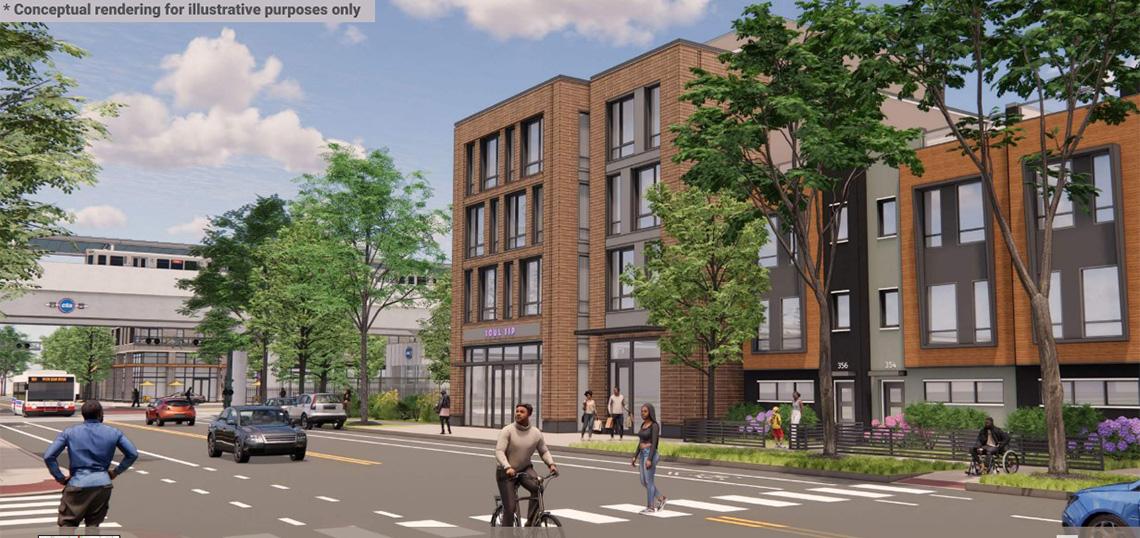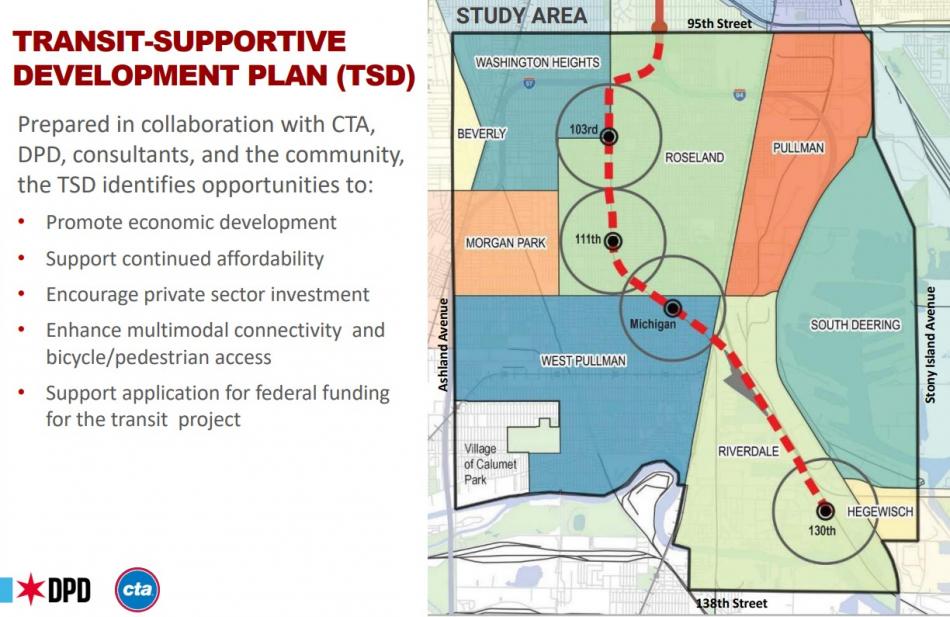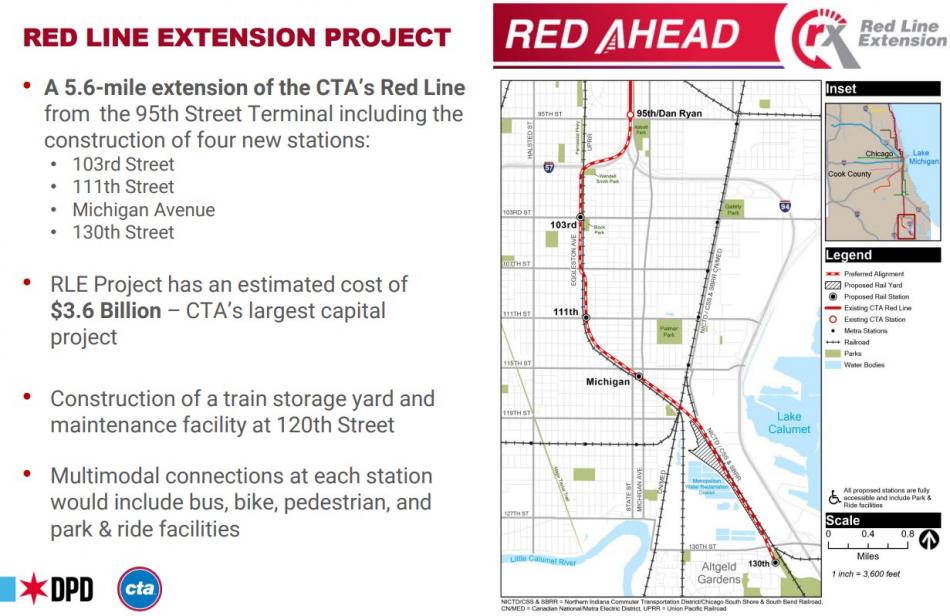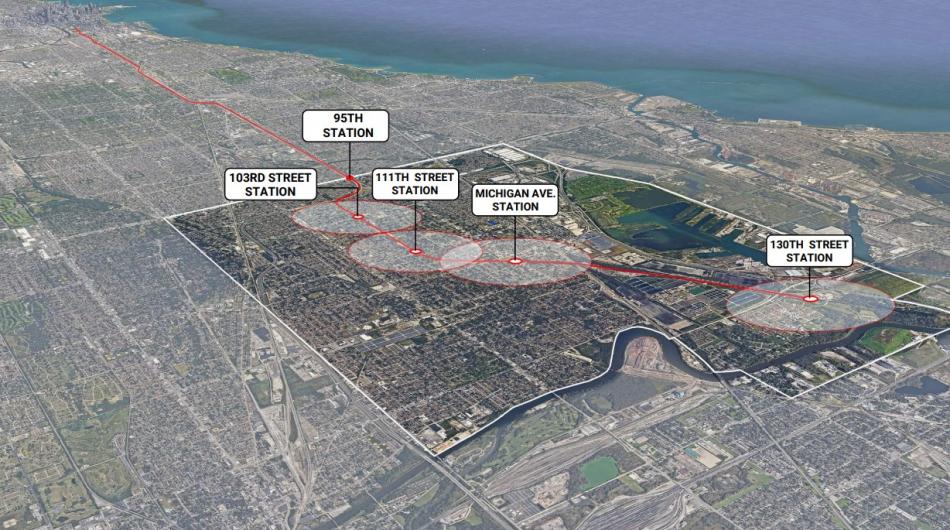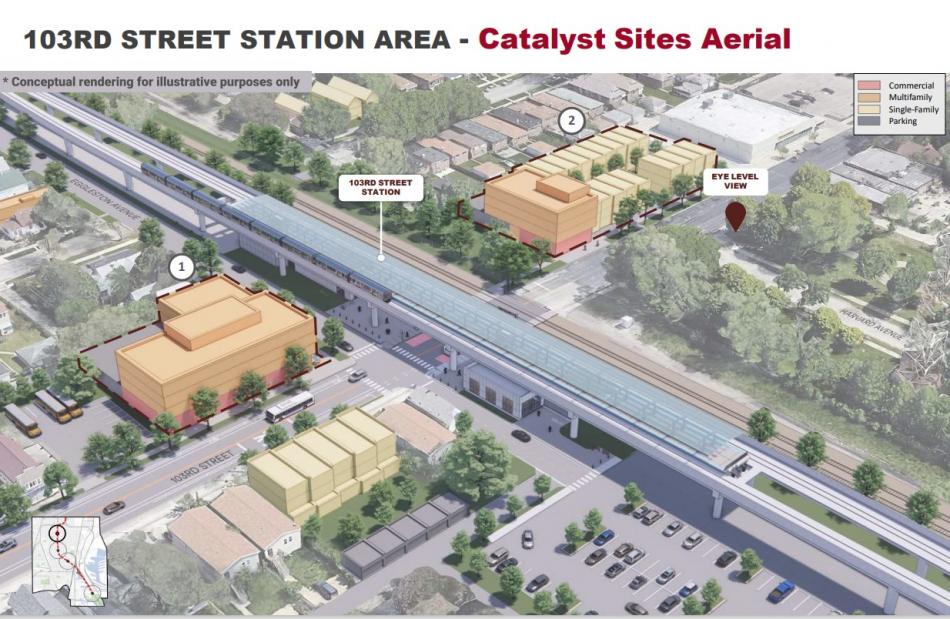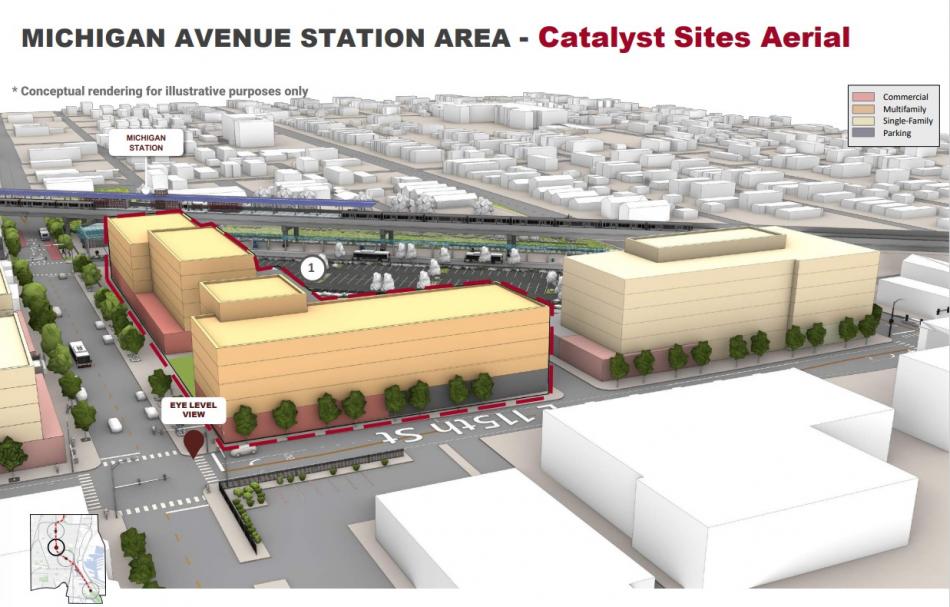The Chicago Plan Commission has approved and adopted the Red Line Extension (RLE) Transit-Supportive Development Plan. Conceived to help guide development around the upcoming Red Line Extension, the plan sets land use goals and expectations for new community and economic development anticipated as a result of the extension connecting the Far South neighborhoods to the CTA L network.
With work underway on the design, the $3.6 billion Red Line Extension will extend the Red Line by 5.6 miles from the current 95th Street terminus down to 130th Street. With four new stations, the Red Line will begin stopping at 103rd and Eggleston, 111th and Eggleston, Michigan Ave near 116th, and 130th St near Altgeld Gardens. The project also includes a train storage yard and maintenance shop facility, located along the new tracks near 120th St.
The plan outlines four main goals which include increasing residential development variety and affordability; strengthening commercial, retail, and mixed-use development; enhancing public space and greater transportation access; and encouraging economic development, business, and employment generators. A market analysis has shown that this area’s population has been in decline for the last two decades and highlights the need for the Red Line Extension investment to help stabilize the surrounding neighborhoods and recover the lost population.
With a land use strategy of development without displacement, the plan sets up an outline for balanced and responsible development to stabilize and increase the population. Strategies include investing in the community though rehabilitation, repair, and reuse of existing buildings; building new catalyst, mixed-use development on lots closest to the stations to spur additional investment; infill the neighborhood with new homes on vacant lots; and to build new mixed-use, commercial, and multifamily developments along major corridors. These options are not necessarily expected to be chronological but can happen at the same time.
Envisioning development at each station, the 103rd St station would be seen as an active community hub with new mixed-use buildings next to the station while having a variety of multifamily residential buildings further away. DPD expects there to be the potential for 13,000 square feet of retail space, 800 new housing units, and $360 million in development potential.
For the stop at 111th St, the area is being planned as a health and wellness district, with new mixed-use development near the station stepping down in scale as it gets deeper into the neighborhood and connecting to the Roseland Medical District near S. Michigan Ave. DPD expects this area to have a potential for 11,000 square feet of retail, 880 housing units, and $460 million in development potential.
At Michigan Ave near 116th, the station area would be seen as a thriving commercial corridor. With the largest potential investment of $850 million, there would be multiple large, mixed-use developments near the station with a potential for 72,000 square feet of retail and 2,100 housing units.
Down by Altgeld Gardens, the final station area at 130th is set to become a vibrant and connected community. With the CHA housing already in place, there isn’t as much room for economic development. DPD expects there could be 22,000 square feet of retail and just 55 housing units added to the area with a development potential of $37 million.
With adoption by the Chicago Plan Commission, the next steps for this plan will include attracting development to the key catalyst sites by DPD and implementing the economic development strategies. Going forward, this document will be the framework for development as DPD and CTA coordinate on the construction of the Red Line Extension.
CTA is looking to award the design/build construction contracts by the end of 2024 and begin construction in 2025. The Red Line Extension is targeting a 2029 completion.




